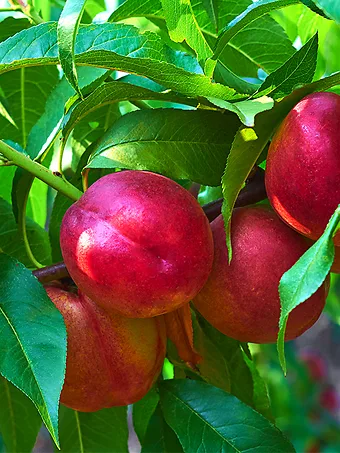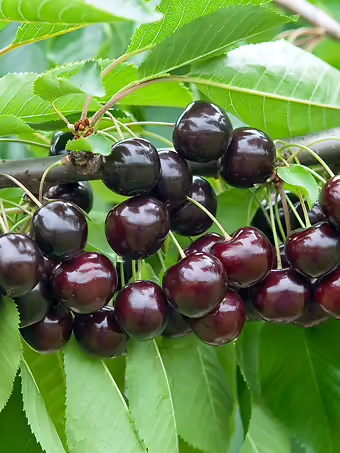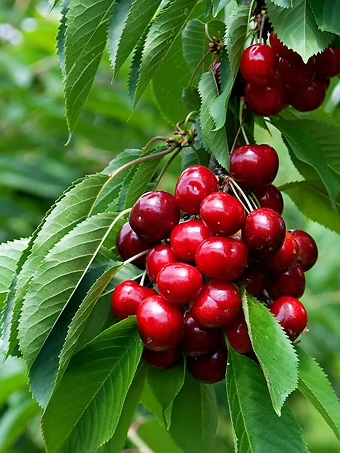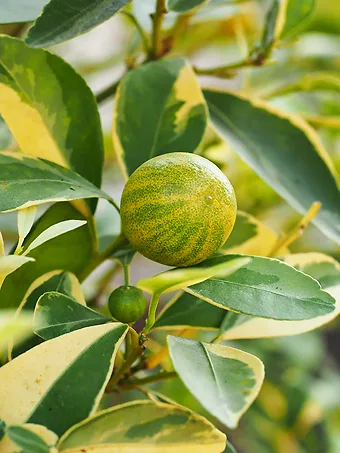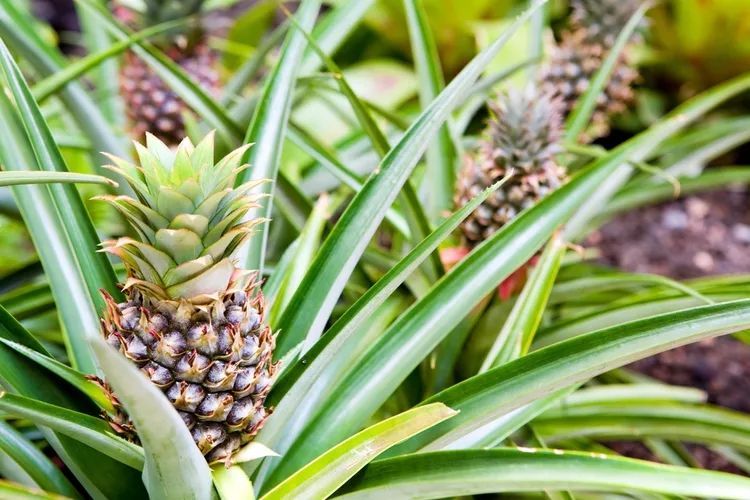
Written by s • How To Grow A Pineapple
The pineapple is one of those fruits that splits opinions, with some loving them and some loathing them. Often the dislike comes from childhood memories of very sharp, sour fruits that many children find unpalatable. However these days there are a few different varieties, and most of the fresh pineapples you find on the supermarket shelf are considerably sweeter and juicier than you might remember.
Christoper Columbus discovered the pineapple on Guadalupe in 1493, during his famous voyage of discovery, and named it for its resemblance to a pine cone. In fact the leathery-skinned fruit is actually a composite formed of up to 200 fruitlets, which the Oxford Companion for Food describes as “berry-like”. These fruitlets are fused together to create the distinctive fruit, which astonished the Spanish King Ferdinand when it was presented to him on Columbus’ return.
Thanks to the exotic looking nature of the pineapple you could be forgiven for thinking they would be difficult to grow. The good news is that they are actually very easy to grow indeed, although they are a little slow to fruit. As modern varieties do not contain seeds, unlike those found in the wild, the most effective way is to use is a pineapple you’ve bought. If you are in a warm area that suffers only mild frosts in winter, then you can plant it right out in the garden. If the winter months will subject the plant to sustained cold weather then a large pot can be utilised; that way the plant can be brought inside to protect it when temperatures plunge.
There are a few different methods for growing pineapple, but the most effective also appears to be the simplest. Buy a pineapple and slice off the top, leaving a small amount of flesh which you can trim off separately. Remove the bottom few leaves to expose the stalk itself, as this is where the roots will emerge from, and leave for a couple of days to dry out. You can eat the rest of the pineapple.
Once this is done, the only thing that remains is to choose your spot in the garden or prepare your pot. Pineapples prefer a slightly acidic soil, so if your garden does not meet this requirement you can treat the area with a small amount of sulfur (peat used to be commonly used as an acidifier, but is no longer recommended). Alternately you can pot plant so you have total control over the soil it will be planted in. Well-drained soil is an absolute must – they must not be planted in boggy or flood-prone areas, as sitting in water for prolonged periods will rot the roots.
Pineapples grow in full sun but will also do fine in dappled shade, so your planting position should take this into account. The sunnier and warmer it is the better your results will be. Ensure there is enough space too, as the plants can reach up to six feet wide by the time they bear fruit and are often over a yard high. The leaves are tough and spiky, so try to avoid planting in high traffic areas of your garden. This said, they plant well in clumps, so don’t be afraid to put a few together. Just be sure to leave at least a foot between each top.
Now, plant it. It is that simple, and then all that is left for you to do is to wait. It can be two or three years before the fruit begins to grow and in that time the rain should be enough to keep it satisfied as it draws the water it needs from its own leaves. Fertilizers can be added if the soil is poor although it is advisable to avoid artificial or concentrated fertilizers, as they can burn the leaves. The best option is a good mulch around the base; choose an organic one that will rot down and nourish the plant.
Once you see the red flower you have around six months to wait; this will turn into a red fruit, becoming yellow as it gets larger. This is when you pick it and enjoy it – saving the top, of course, so you can start the process all over again.
A freshly picked ripe pineapple is a real treat, and very different to those shop bought ones that are picked when almost ripe and then shipped very quickly. Once picked the pineapple does not continue to ripen, unlike most fruit, and in fact it begins to deteriorate.
Just one final tip – if you decide to venture into mass pineapple production get yourself some good gloves! The bromelin which is found in abundance in the leaves and fruit is a powerful enzyme that forces farmers and cannery workers to take protection from its effects. It acts as a fabulous tenderizer, breaking down the proteins in meat so effectively that it just falls apart. That’s great on a gammon steak, but not so much on your hands. However if you just have a cluster of half a dozen plants in the garden you’ll be just fine, but it is an interesting fact for the dinner table. Just keep it until your guests have eaten the pineapple.
